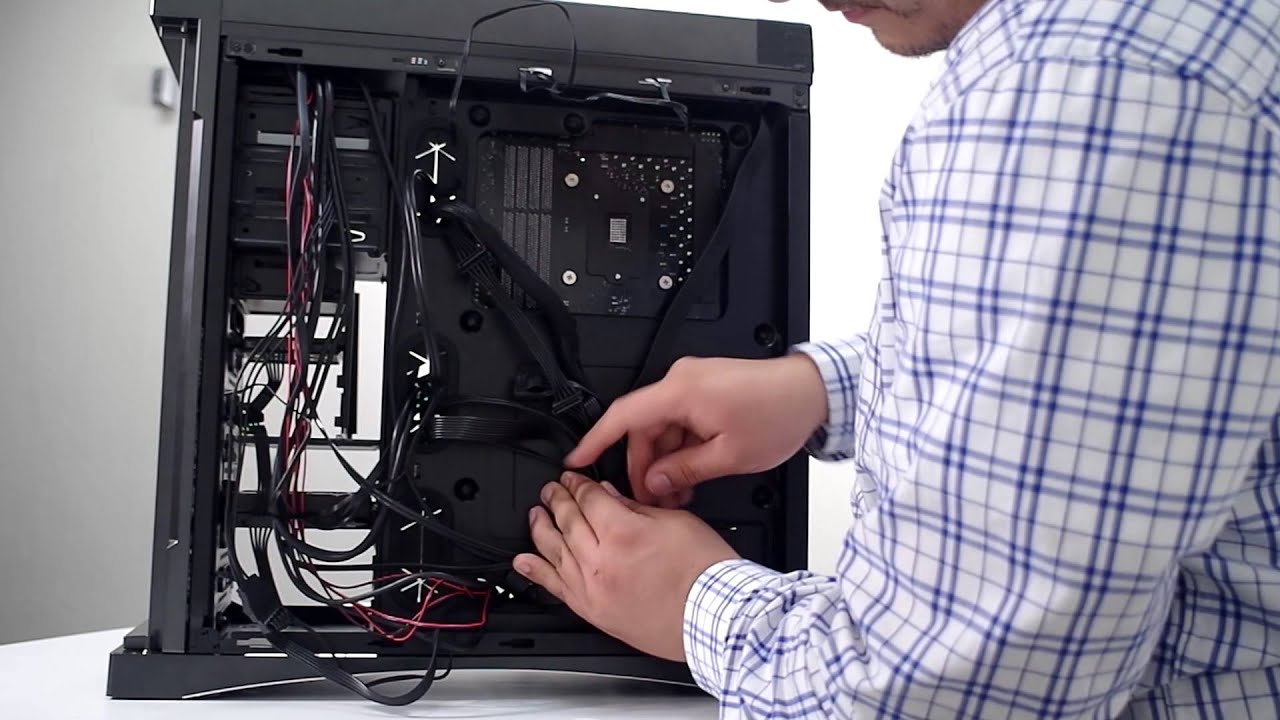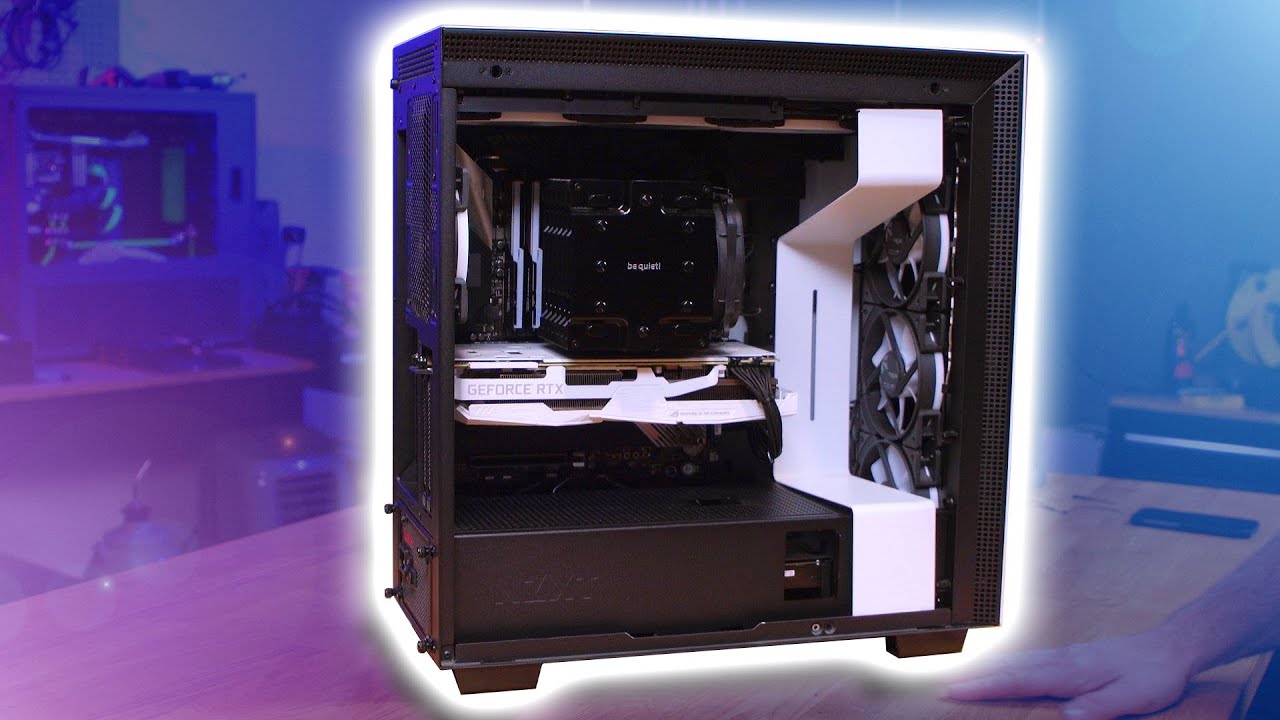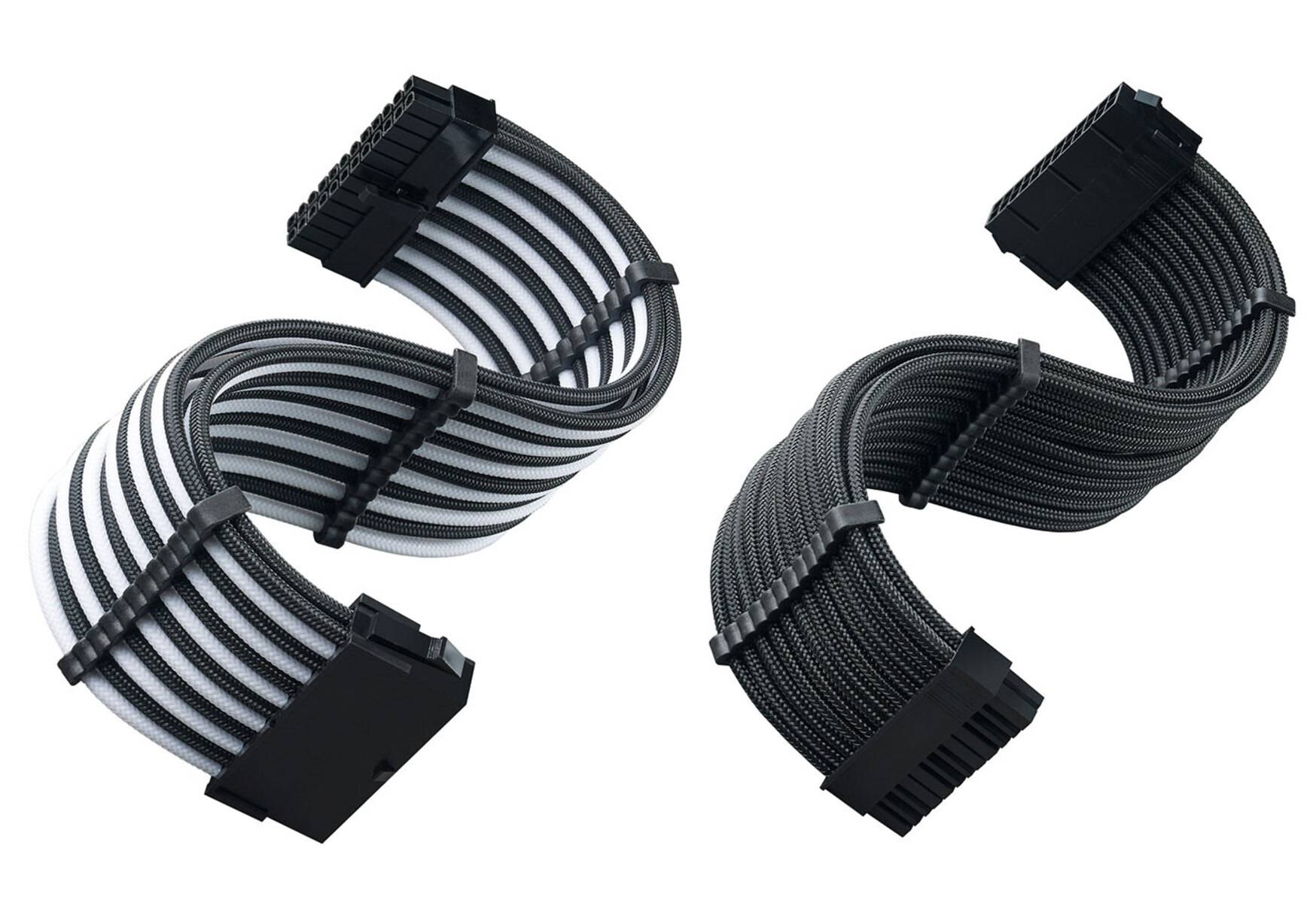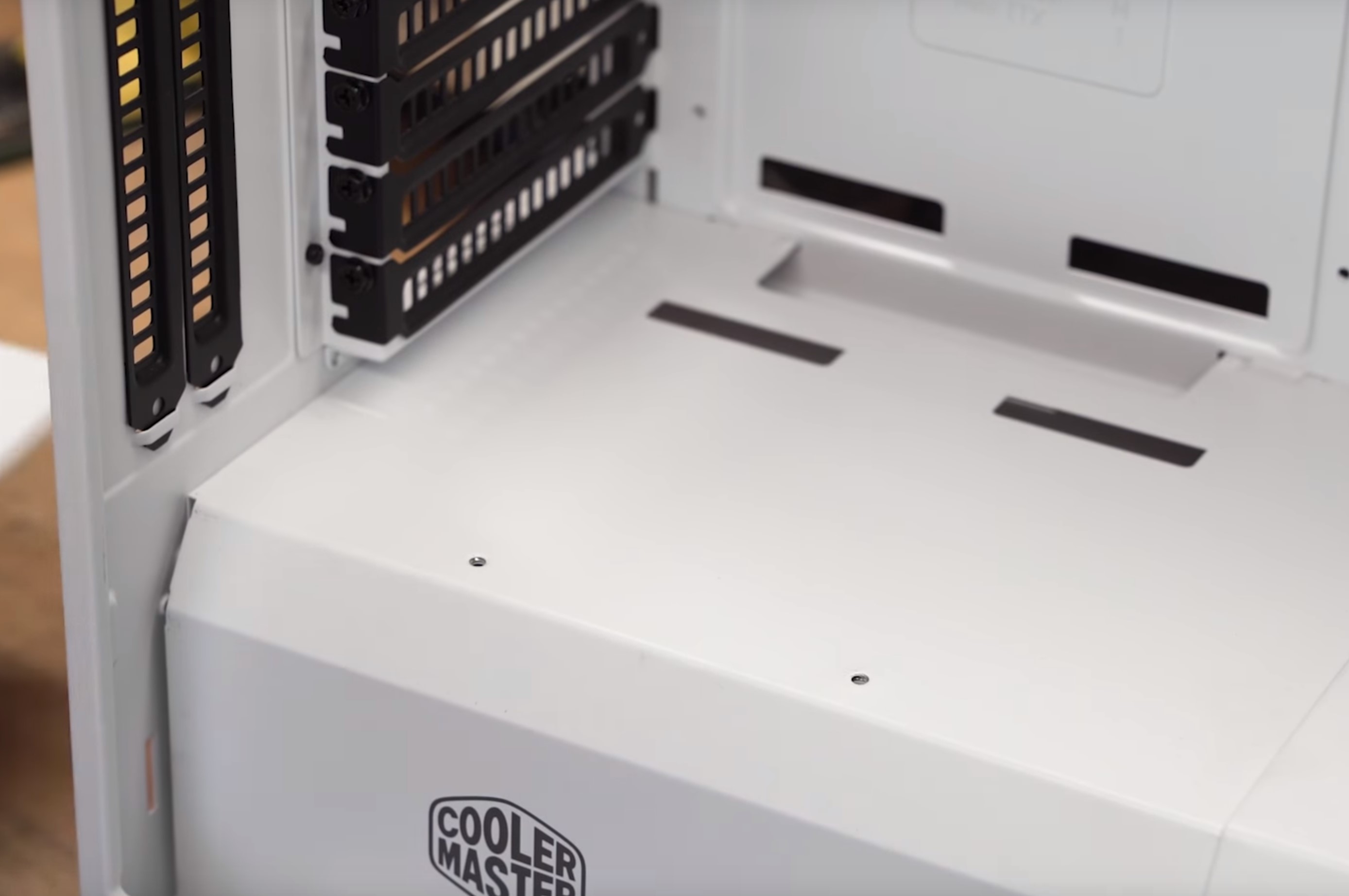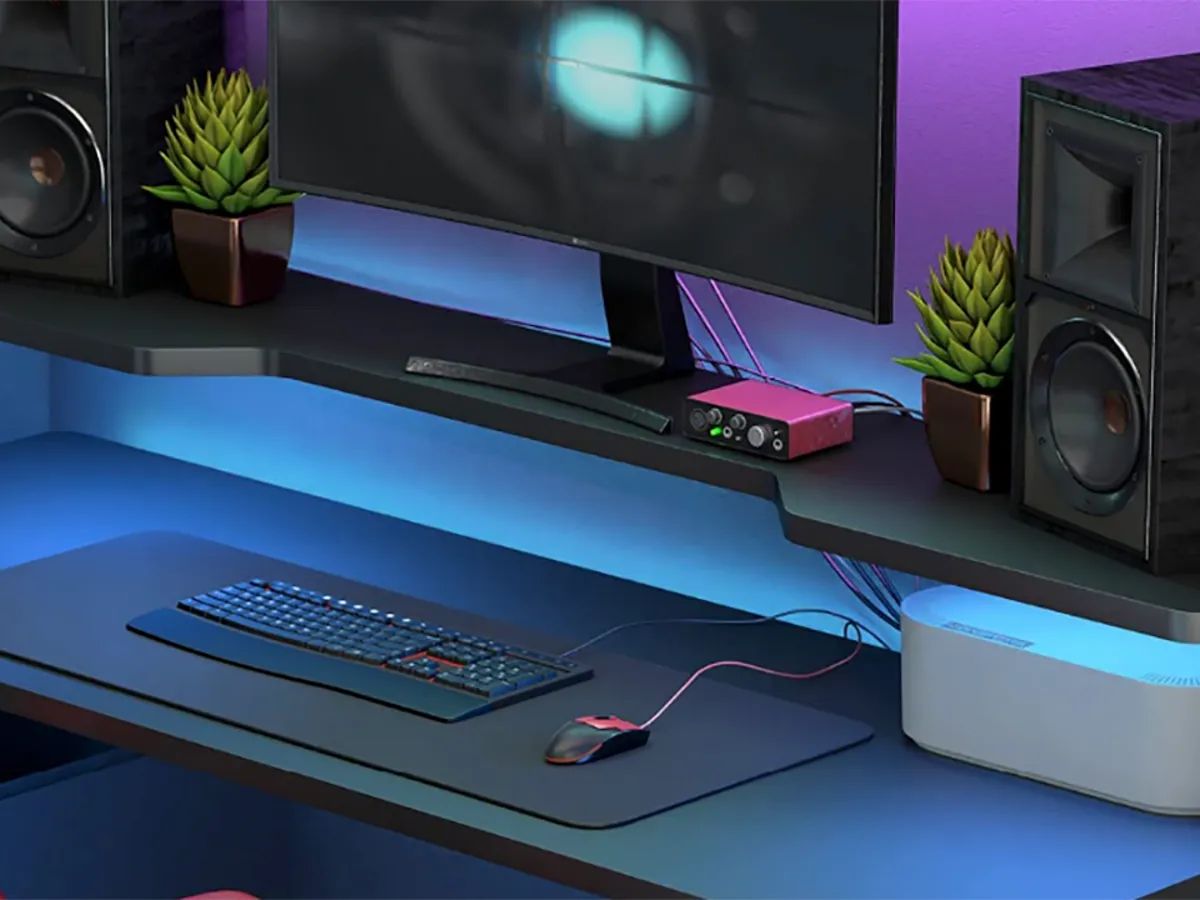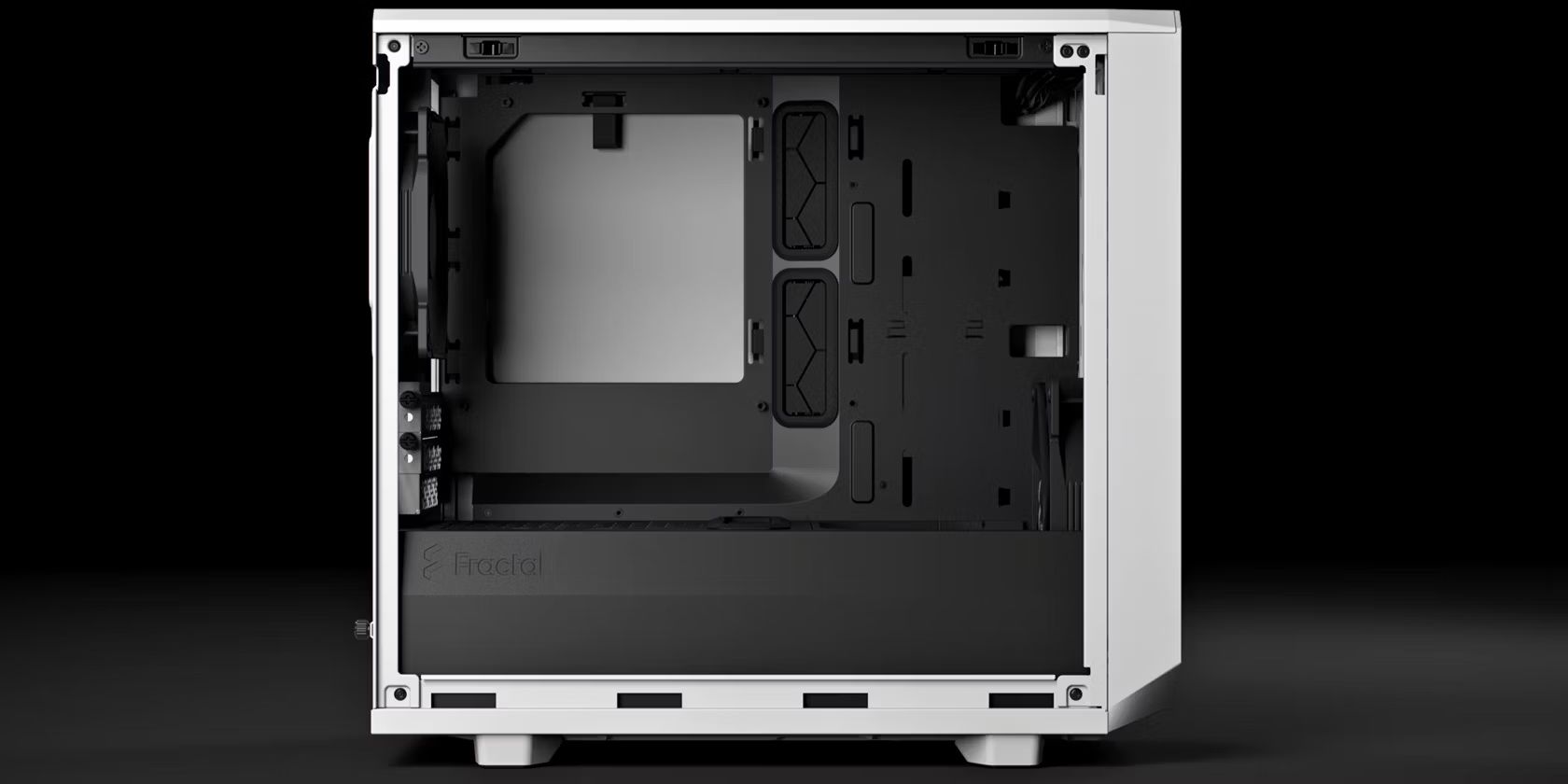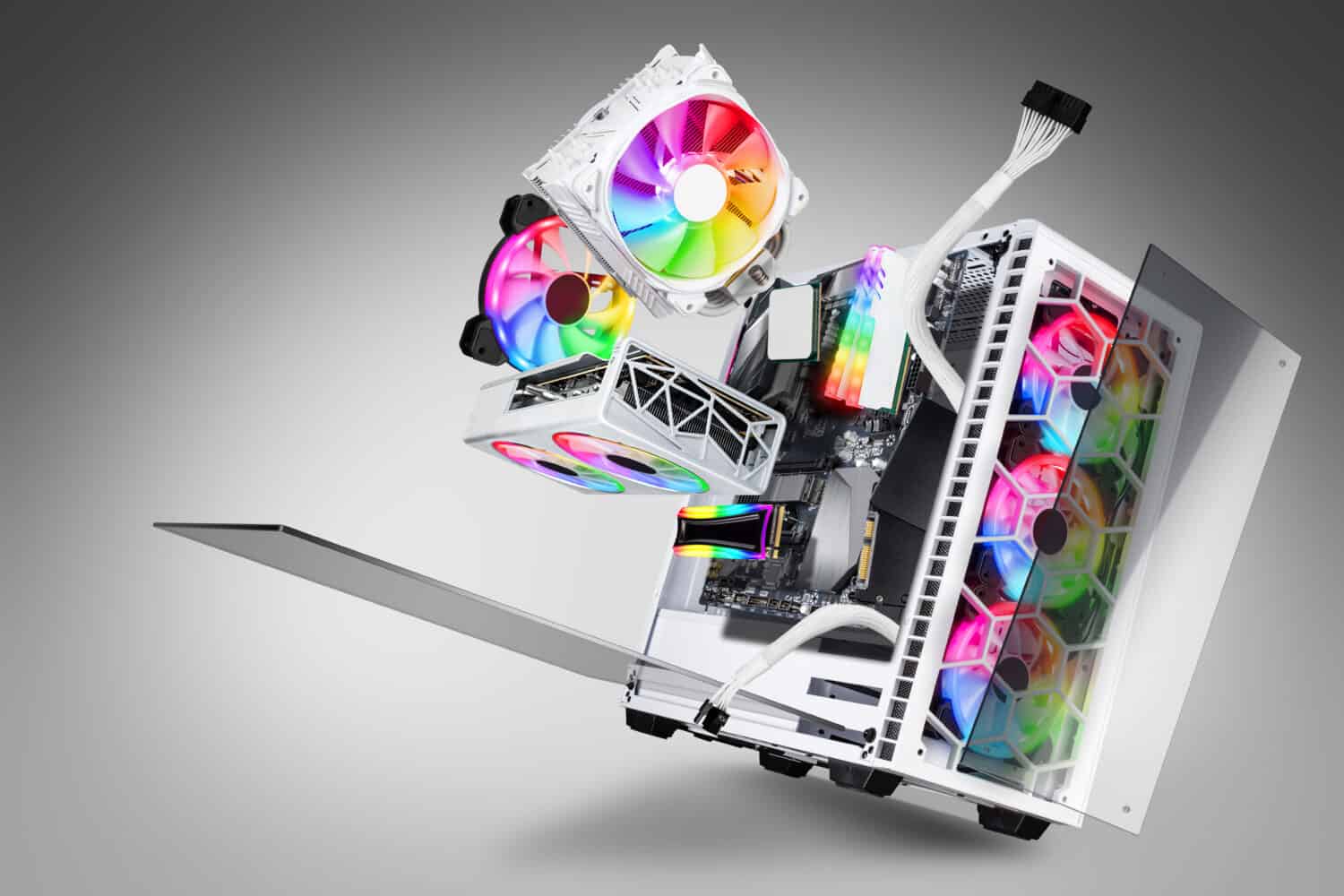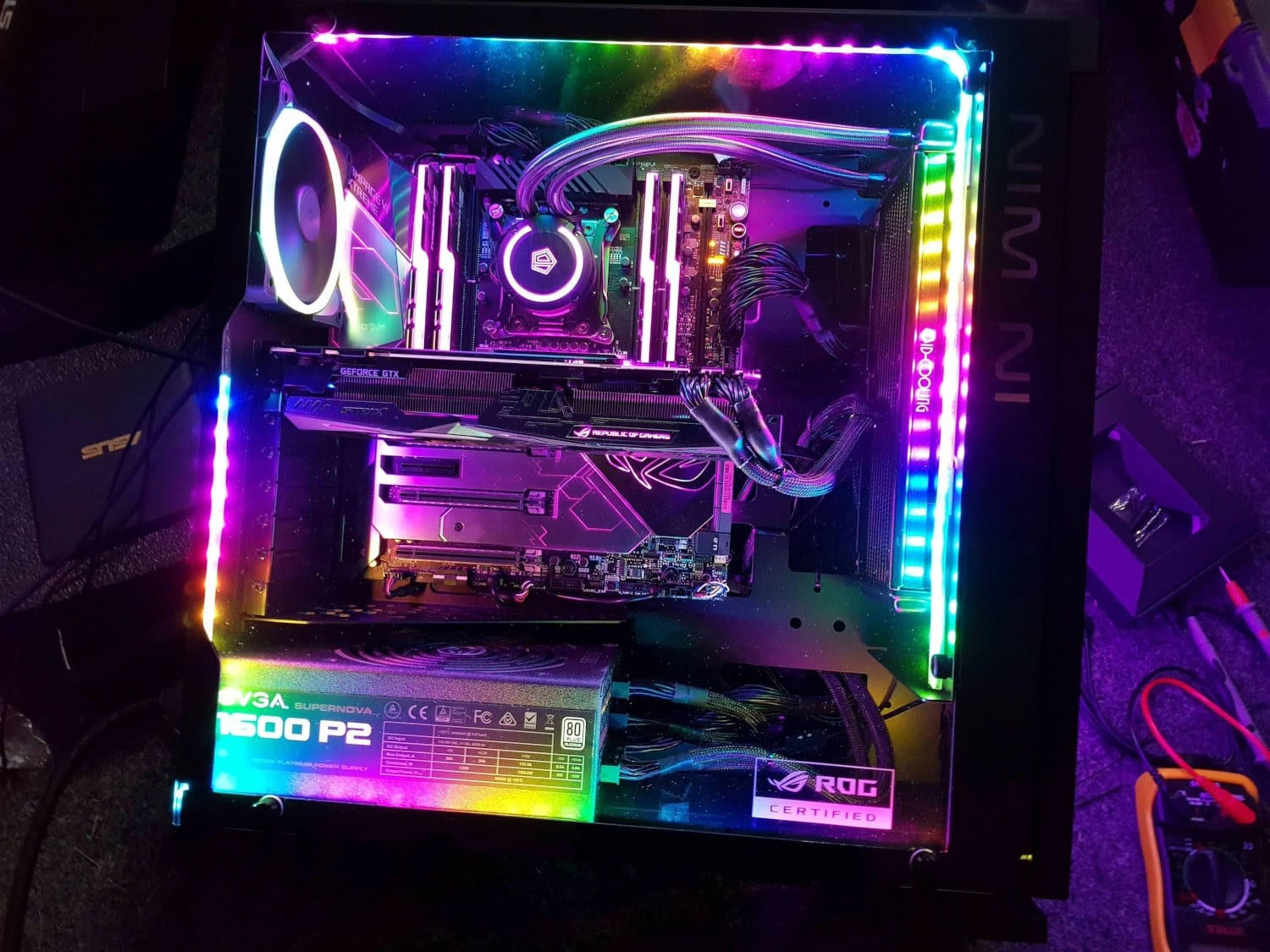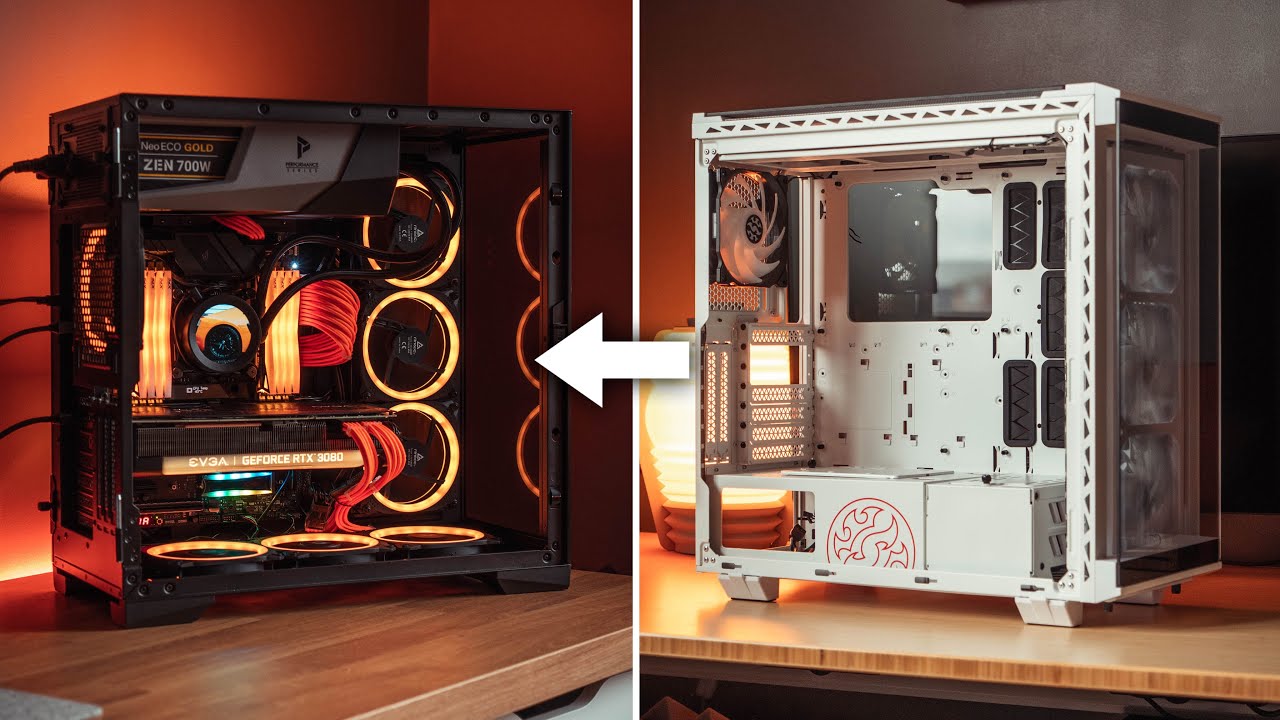Introduction
Having a clutter of wires inside your PC case not only looks messy but can also impede airflow and cause potential damage to your components. However, with the right techniques and tools, you can easily hide and organize the wires within your PC case. In this article, we will discuss various methods to effectively manage and hide wires in your PC case.
Proper cable management not only improves the aesthetics of your PC but also has practical benefits. By keeping wires organized and hidden, you can enhance airflow and cooling performance, thereby ensuring the optimal functioning of your components. Moreover, managing cables can make troubleshooting and upgrading easier by providing clear access to various hardware components.
Before diving into the techniques, it’s important to note that every PC case might have its own cable management capabilities. Some cases come with built-in cable routing channels, tie-down points, or dedicated cable management compartments, while others may require additional accessories for effective cable management. Regardless of the case you have, the tips discussed here will help you achieve a cleaner and more organized cable management system.
Organizing Cables Inside the PC Case
When it comes to organizing cables inside your PC case, the goal is to keep them neat, untangled, and out of the way. Here are some tips to help you achieve that:
- Plan your cable layout: Before installing any components, take a moment to plan how you want your cables to be routed. Consider the length of your cables and the optimal path for them to reach their respective connections. This will help avoid any excessive cable length or unnecessary bends.
- Use cable ties or Velcro straps: Bundling cables together is a simple and effective way to keep them organized. Use cable ties or Velcro straps to group cables that run in the same direction or connect to the same ports. Be careful not to overtighten the ties, as this can damage the cables.
- Label the cables: To make it easier to identify and troubleshoot specific cables, consider labeling them. Use colored cable ties or adhesive labels to mark the purpose or destination of each cable. This can save you time and frustration when making changes or diagnosing issues in the future.
- Utilize cable-routing channels: Many PC cases come with built-in cable-routing channels or grommets that allow you to route cables discreetly. Take advantage of these features by running your cables through these designated paths. This not only keeps the cables organized but also improves airflow within the case.
Remember that proper cable management is not only about aesthetics; it also plays a crucial role in maintaining optimal airflow and reducing the risk of cable damage. Taking the time to organize your cables inside the PC case will not only improve the overall look of your system but also promote better cooling performance and longevity of your components.
Using Cable Management Solutions
To further enhance cable organization and minimize clutter, there are various cable management solutions available on the market. These solutions are designed to help you neatly organize and secure your cables. Here are some popular options:
- Cable Ties and Velcro Straps: Cable ties and Velcro straps are inexpensive and versatile solutions for bundling cables together. They can be used to group cables of similar types or to secure cables to various parts of the case, such as cable-routing channels or tie-down points.
- Cable Clips and Holders: Cable clips and holders are small attachments that can be mounted on the edges or surfaces of your case. They provide a convenient way to hold and route cables, keeping them in place and preventing them from hanging or tangling.
- Cable Sleeves and Wraps: Cable sleeves and wraps are flexible covers that enclose multiple cables. These sleeves not only help in organizing cables but also provide a cleaner and more streamlined appearance. They are available in various sizes, colors, and materials to suit different needs.
- Cable Combs: Cable combs are plastic or metal accessories that hold individual cables parallel to each other. They ensure that all cables maintain consistent spacing and are neatly aligned. Cable combs are particularly useful for managing flat or ribbon cables.
When selecting cable management solutions, consider the specific needs and aesthetics of your PC build. Explore different options and find the ones that work best for your case. Remember, the goal is to achieve a clean and organized cable layout that not only looks visually appealing but also promotes efficient airflow and easy maintenance.
Routing Cables Effectively
Properly routing your cables is crucial for maintaining a well-organized and efficient PC build. Here are some tips to help you route your cables effectively:
- Separate Power and Data Cables: To minimize interference and maintain optimal performance, it’s best to separate power cables (such as those for your motherboard and graphics card) from data cables (such as SATA or USB cables). Keeping them separate reduces the chance of electromagnetic interference and helps maintain signal integrity.
- Route Cables Behind the Motherboard Tray: Many modern PC cases have a space behind the motherboard tray where you can hide excess cables. Take advantage of this space to route cables that are not in use. This keeps the main area clean and free from obstruction, allowing for better airflow.
- Utilize Cable Routing Cutouts: Most cases come with strategically placed cutouts that allow you to route cables through specific areas. Use these cutouts to pass cables from one part of the case to another, ensuring a cleaner and more organized layout.
- Bundle and Route Cables Together: To minimize cable clutter, combine cables that have a similar route or destination and secure them together using cable ties or Velcro straps. This helps maintain a cleaner appearance and prevents cables from tangling or obstructing airflow.
When routing your cables, be mindful of creating clean and straight lines. Avoid sharp bends or twisted cables, as they can hinder airflow and put strain on the cables. It’s also essential to leave enough slack in the cables to allow for easy component installation or removal without putting excessive tension on the connectors.
Additionally, consider the position of any fans or CPU coolers when routing your cables. Ensure that cables are not obstructing the airflow from fans or impeding the movement of CPU coolers. This will help maintain optimal cooling performance and prevent any potential heat-related issues.
Securing Cables to Prevent Interference or Damage
Properly securing your cables is essential to prevent interference, minimize cable strain, and avoid potential damage. Here are some tips to help you secure your cables effectively:
- Use Cable Clips and Mounts: Cable clips and mounts are adhesive or screw-in holders that can be attached to the case or other surfaces. They help secure cables in place, preventing them from moving or coming in contact with other components or fans.
- Route Cables Away from Fans and Heat Sources: Make sure to route cables away from any fans or heat sources like the CPU or GPU. This prevents the cables from obstructing the airflow or getting overheated, which can lead to performance issues or damage.
- Use Rubber Grommets or Cable Pass-Throughs: Many cases come with rubber grommets or cable pass-throughs at key points where cables need to enter or exit the case. These features provide a safe and organized way to route cables while preventing wear and tear from sharp metal edges.
- Avoid Over-tightening Cable Ties: While using cable ties is an effective way to bundle and secure cables, it’s important not to over-tighten them. Tightening the ties excessively can put strain on the cables and potentially damage them or affect their performance. Apply sufficient tension to keep the cables in place but without causing undue pressure.
- Consider Cable Combs or Clips: Cable combs or clips can be used not only for organization but also for securing cables in place. These accessories hold cables in a straight and organized manner, preventing them from shifting or tangling.
Remember to periodically check and adjust your cable management setup, especially after moving or transporting your PC. Cables can shift or become loose during these movements, so it’s important to ensure that they are still properly secured to avoid any potential issues.
By taking the time to secure your cables properly, you can prevent interference, ensure optimal airflow, and protect your components from damage. This will contribute to the overall stability and longevity of your PC build.
Concealing Cables with Cable Sleeves or Wraps
One effective way to achieve a clean and organized cable management system is by using cable sleeves or wraps. These accessories not only bundle cables together but also provide a sleek and aesthetically pleasing appearance. Let’s explore how you can use cable sleeves or wraps to conceal your cables:
- Select the Right Sleeve or Wrap: Cable sleeves and wraps come in various materials, such as nylon, fabric, or braided options. Choose a sleeve or wrap that suits your desired look and provides the necessary flexibility to accommodate your cables.
- Measure and Cut the Sleeve or Wrap: Start by measuring the length of your cables and cut the sleeve or wrap accordingly. Ensure that you leave enough excess to cover the entire length of the cable, including any bends or loops.
- Wrap the Sleeve Around the Cables: Slide the sleeve or wrap over the cables, starting from one end. Be sure to keep the sleeve tight and secure as you wrap it around the cables. If necessary, use zip ties or heat shrink tubing to secure the ends and prevent the sleeve from unraveling.
- Organize and Route the Cables: Once the cables are sleeved or wrapped, organize them neatly and route them along the designated cable routing channels or behind the motherboard tray. Use cable ties or Velcro straps to secure the sleeved cables in place and maintain a tidy appearance.
- Manage Cable Exits and Junctions: Pay attention to cable exits or junctions where several cables come together. Use cable ties or clips to hold the sleeved cables together and prevent them from separating or tangling at these points.
Cable sleeves or wraps not only conceal the cables but also protect them from external elements and reduce the risk of tangling or snagging. Additionally, they can contribute to improved airflow by ensuring that the cables are neatly organized and do not obstruct the cooling components.
It’s important to note that cable sleeves or wraps may add some bulk to the cables. As a result, it’s crucial to ensure that the cables can still be routed effectively and do not interfere with the closing of the case or any other components. Prioritize functionality and practicality when choosing the appropriate type and thickness of cable sleeve or wrap for your PC build.
Using Cable Combs or Clips
Cable combs and clips are useful tools for enhancing the visual appeal and organization of your cable management. They help keep cables neatly aligned and prevent them from shifting or tangling. Let’s explore how you can use cable combs or clips to improve your cable management:
- Choose the Right Type of Cable Comb or Clip: Cable combs and clips come in various sizes and materials. Select a comb or clip that matches the thickness and number of cables you intend to manage. Make sure it provides a secure and snug fit, without putting excessive pressure on the cables.
- Arrange Cables in the Comb or Clip: Insert the cables into the designated slots or openings in the comb or clip. Arrange the cables so that they are evenly spaced and parallel to each other. This helps maintain a clean and organized appearance.
- Position the Combs or Clips Properly: Place the combs or clips at strategic locations where cables need to be managed, such as along cable-routing channels or behind the motherboard tray. Position them in a way that keeps the cables organized and prevents them from obstructing airflow or interfering with other components.
- Secure Cables with Cable Ties: Once the cables are inserted into the combs or clips, use cable ties or Velcro straps to secure them to the case or designated tie-down points. This helps prevent the cables from shifting or loosening over time.
Cable combs and clips not only improve cable organization but also add a visual appeal to your PC build. They create straight, neat lines that enhance the overall cleanliness and professionalism of your cable management.
When using cable combs or clips, it’s important to consider the overall layout and spacing of your cables. Ensure that the combs or clips do not obstruct any component or interfere with the closing of the case. Additionally, be mindful of any sharp edges or corners on the combs or clips that may cause damage to the cables, especially if they are made of rigid materials.
By utilizing cable combs or clips, you can achieve a professional and organized cable management system that not only improves the aesthetics of your PC build but also contributes to better airflow and easier troubleshooting or maintenance.
Installing Cable Management Accessories
To further enhance your cable management efforts, you can consider installing additional accessories that are specifically designed to improve cable organization and aesthetics. Here are some cable management accessories you can install:
- Cable Management Bars or Brackets: These accessories are typically installed behind the motherboard tray or in designated areas of the case. They feature hooks or loops where you can secure cables, keeping them organized and preventing them from shifting or becoming tangled.
- Modular PSU Cables: Many power supply units (PSUs) now offer modular cables that allow you to attach only the cables you need. This eliminates excess cables and reduces overall cable clutter inside the case.
- PSU Shrouds or Covers: Installing a PSU shroud or cover can hide the majority of your PSU cables, creating a cleaner and more streamlined look. These covers also help improve airflow by separating the cables from the main component area.
- Custom Cable Extensions: If you’re looking to add a personal touch to your cable management, you can opt for custom cable extensions. These extensions are available in various colors, materials, and lengths, allowing you to match the aesthetic theme of your build while keeping the cables organized.
When installing cable management accessories, it’s important to refer to the manufacturer’s instructions and ensure compatibility with your specific case and components. Take your time to plan the installation and consider the best positioning for each accessory. This will help you achieve a well-organized and visually appealing cable management system.
Additionally, be mindful of any additional space requirements or potential obstructions caused by these accessories. Ensure that they do not interfere with the closing of the case or the operation of any components, such as fans or storage drives.
Installing cable management accessories can elevate the overall look of your PC build and provide a more efficient cable management solution. By using these accessories in conjunction with other cable management techniques, you can achieve a clean, organized, and functional system that showcases your attention to detail and enhances the overall aesthetics of your PC.
Final Thoughts
Effective cable management is an essential aspect of building a clean and well-organized PC. Not only does it improve the overall aesthetics of your system, but it also has practical benefits such as improved airflow and easier maintenance. By following the tips and techniques discussed in this article, you can achieve a clutter-free and visually appealing cable management setup.
Remember to plan your cable routing ahead of time and utilize cable management solutions such as cable ties, Velcro straps, cable combs, and clips to bundle and secure your cables. Use cable sleeves or wraps to further conceal and streamline your cable setup. Additionally, take advantage of any cable-routing channels or compartments that your case may provide.
While organizing and routing the cables, it’s crucial to consider the impact on airflow and the prevention of cable interference or damage. Keep power and data cables separate, route cables away from heat sources and fans, and secure them properly using cable management accessories or mounting solutions.
Ultimately, the goal is to create a clean and organized cable management system that not only looks visually appealing but also promotes efficient airflow and easy accessibility for future upgrades or maintenance. Regularly maintain and adjust your cable management setup to accommodate any changes or additions to your PC build.
Investing time and effort in proper cable management will not only improve the overall appearance of your PC but also contribute to its longevity and performance. So, take the necessary steps to organize and conceal your cables, and enjoy a clutter-free and well-functioning PC that you can be proud of.







